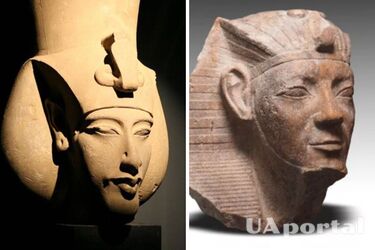Huge statue of a little-known pharaoh discovered in Egypt

A group of archaeologists excavating in the northeastern territory of modern Cairo, the former possessions of Ramses, discovered a huge statue of the pharaoh.
This is reported by Express.co.uk.
Interestingly, researchers have been working at this site for the past five years without finding anything important. But at the last moment of work, one of the workers discovered a solid object that turned out to be a large stone. "Suddenly, the workers told us that there was a large stone there," said Dr. Dietrich Raue in a documentary called Secrets: Pharaoh in the Suburbs.
Read also: A perfectly preserved embryo was found inside a fossilized dinosaur egg for the first time (photo)
As the site was being cleared, a huge statue began to emerge, and it turned out that the workers were standing on top of it. First, they uncovered a large torso made of quartzite, one of the most valuable materials in ancient Egypt, and then they dug up a huge head.
The archaeologists realized that they had made an important discovery - a giant statue of the pharaoh, the documentary's host noted. At first, they believed that the statue belonged to Ramses-the size, material, and elaborate carvings suggested that. However, a number of hieroglyphs on the surface of the rock pointed to another owner.
Dr. Raue noted that four hieroglyphs of incredible quality were found by archaeologists, as if they had been carved in butter rather than one of the hardest materials of the time. These hieroglyphs revealed that the statue belonged to a pharaoh little known to the general public: Psamtiku I.
Initially, it was believed that Psamtik was a minor pharaoh, but the size of the statue indicated a more significant role in his history. Information about Psamtik is limited and somewhat dubious. It is known that he ruled for 54 years, starting in 664 BC, when Egypt had already lost its status as a world power and was in decline. "These were not glory days," said Egyptologist Chris Naughton. "The country was no longer as rich as it used to be, it had lost control of its territory and its empire. Before this, we thought that there was not enough money to create such a large statue. But this discovery changes our understanding of that period," he added.
As a reminder, a 1,400-year-old treasure was found in Israel.
If you want to get the latest news about the war and events in Ukraine, subscribe to our Telegram channel!
